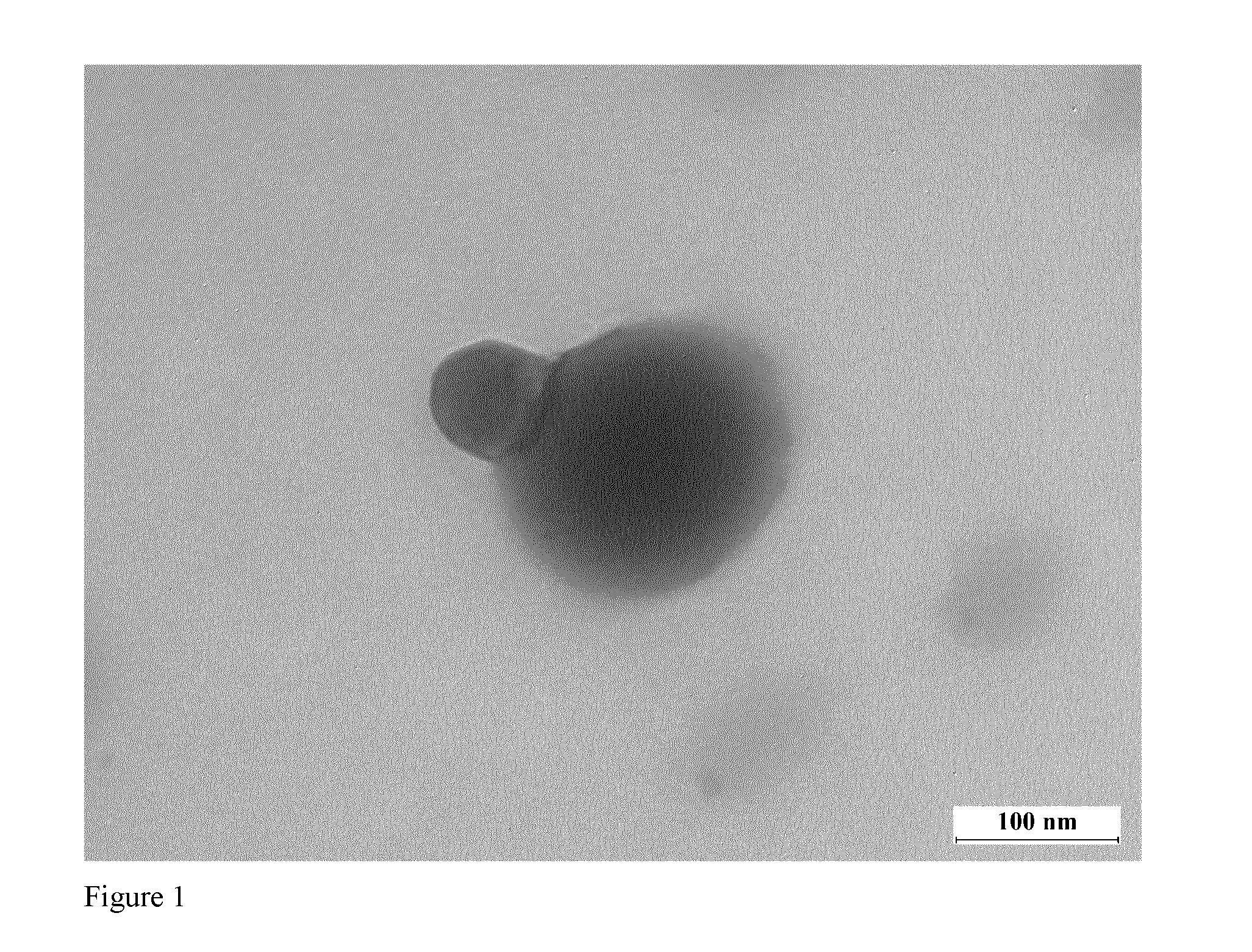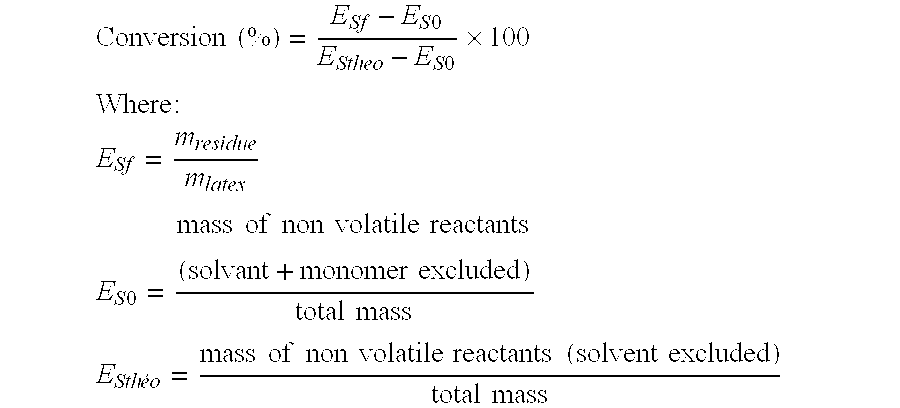Process for preparing a vinylidene chloride polymer latex
a technology of vinylidene chloride and polymer latex, which is applied in the direction of electrolytic applications, coatings, etc., can solve the problems of heat action and the tendency to decompose, and achieve the effects of improving thermal stability, reducing heat dissipation, and reducing heat dissipation
- Summary
- Abstract
- Description
- Claims
- Application Information
AI Technical Summary
Benefits of technology
Problems solved by technology
Method used
Image
Examples
example 1 (
According to the Present Invention)
Seed Latexes of Glycidyl Methacrylate-Co-Butyl Methacrylate
[0197]General Procedure (Samples 1A to 1E):
[0198]Emulsion copolymerization of glycidyl methacrylate and butyl methacrylate was carried out in a 250 mL double-walled glass vessel, equipped with a mechanical glass anchor propeller. An aqueous solution of sodium metabisulfite, Dowfax 2A1 and sodium hydrogenocarbonate was charged in the reactor, heated up at 30° C. and stirred at a speed of 200 rpm. At the beginning of the reaction, 9 mL of a 10 g / L aqueous solution of KPS was injected at once in the reactor followed by a continuous addition of this solution at a rate of 4.5 mL / h for 4 h. At the same time a continuous feed of the monomer solution (90 wt % of GMA, 10 wt % of BMA) was started and maintained for 3 h. Continuous additions were performed with two Perfusor Compact syringe pumps (Braun). The reaction lasted for 5 h in total.
[0199]Preparation of Samples 1F and 1G
[0200]The general proce...
example 2 (
According to the Present Invention)
Poly(Glycidyl Methacrylate-Co-Butyl Methacrylate) / Poly(Vinylidene Chloride-Co-Methyl Acrylate) Composite Latexes Containing 2.5%, 1.7%, 1.5% and 1.0% by Weight of Seed Latex Prepared in Example 1, Relative to the Weight of the Poly(Vinylidene Chloride-Co-Methyl Acrylate)
[0204]Seeded emulsion copolymerization of vinylidene chloride and methyl acrylate was performed in a 300 mL stainless steel reactor (Parr Instrument Company), equipped with a stainless steel 4-bladed mechanical stirrer and internal pressure and temperature sensors. Oxygen was removed from the autoclave by purging it via three cycles of vacuum (10−2 mbar) broken with nitrogen. Vacuum was restored in the reactor before charging an aqueous solution containing the poly(GMA-co-BMA) seed latex obtained in Example 1 and sodium metabisulfite. A 4 bars nitrogen overpressure was then established in the vessel. The speed of agitation was set at 250 rpm and the temperature was raised to 55° C. ...
example 5 (
According to the Invention)
Preparation of Polymer Blends of the Poly(GMA-Co-BMA) Seed Latex Prepared in Example 1 and the Poly(VDC-Co-MA) Latex Prepared in Example 4
[0223]Latex blends were prepared with a seed latex prepared in Example 1 and a polyvinylidene chloride latex of Example 4.
[0224]The blends of polymers were carried out by mixing poly(GMA-co-BMA) and poly(VDC-co-MA) latexes in the following proportions:[0225]5A: 0.2629 g of latex seed prepared in Example 1C and 4.7682 g of reference PVDC latex prepared in Example 4A (for a 2.5 wt % poly(GMA-co-BMA) content in the dry sample).[0226]5B: 0.1584 g of latex seed prepared in Example 1A and 4.8402 g of reference PVDC latex prepared in Example 4A (for a 1.5 wt % poly(GMA-co-BMA) content in the dry sample)
[0227]The two blends of latexes were then subjected to freeze-drying.
PUM
| Property | Measurement | Unit |
|---|---|---|
| temperature | aaaaa | aaaaa |
| temperature | aaaaa | aaaaa |
| pH | aaaaa | aaaaa |
Abstract
Description
Claims
Application Information
 Login to View More
Login to View More - R&D
- Intellectual Property
- Life Sciences
- Materials
- Tech Scout
- Unparalleled Data Quality
- Higher Quality Content
- 60% Fewer Hallucinations
Browse by: Latest US Patents, China's latest patents, Technical Efficacy Thesaurus, Application Domain, Technology Topic, Popular Technical Reports.
© 2025 PatSnap. All rights reserved.Legal|Privacy policy|Modern Slavery Act Transparency Statement|Sitemap|About US| Contact US: help@patsnap.com


